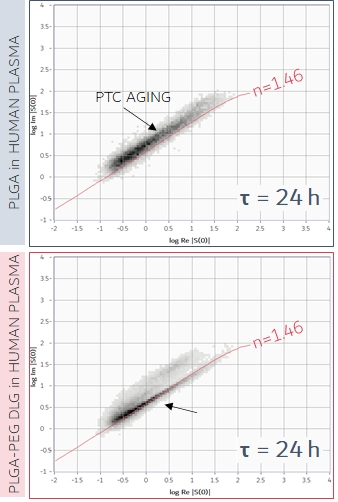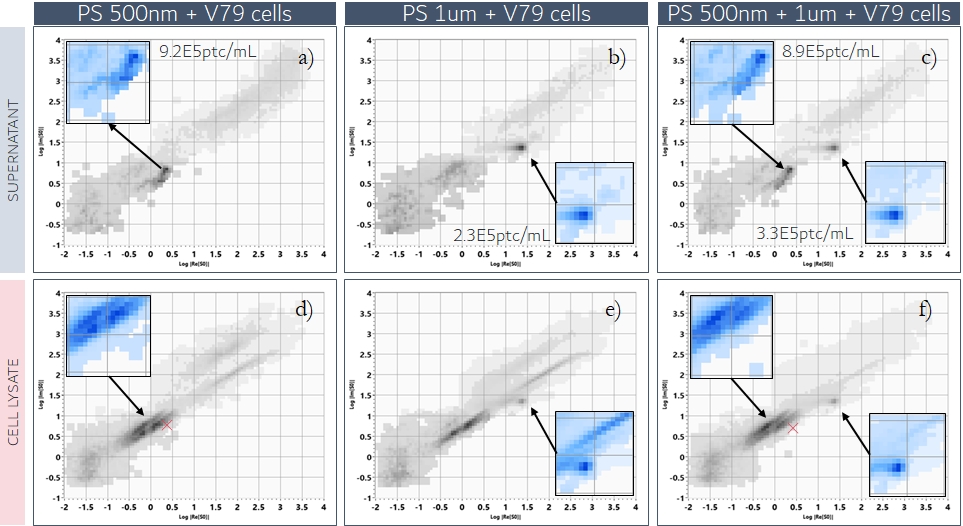Effective analysis of mixes of particles and biological corpuscles in biological target liquids (eg. serum, plasma, urine, and cell lysate) is foreclosed to traditional analytical approaches relying on light scattering methods as DLS, SLS, NTA and Obscuration due to the presence of the heterogeneity of these real systems. The capability of Classizer™ ONE based on SPES / SPES² methods of discriminating single particle basing on their optical properties is of capital importance with heterogeneous biological systems. In particular, the advantage is rampant and unique when particles have to be counted and analysed directly in the biological target media to tailor the effectiveness of drug delivery product formulation or to study eco-/cito-toxicity effects of particle on ecosystems and human health.
(in figure) (TOP) (top) EOS CLOUDS for a heterogeneous sample of human plasma mixed with an emulsion of PLGA particles after 24h incubation at 37°C. PLGA population changed its optical properties and shifted to a location corresponding to lower refractive index. Red line represents expected size trend for PLGA particles at 0h as a reference. (down) EOS CLOUDS for a heterogeneous sample of human plasma mixed with an emulsion of PLGA stabilized with PEG particles after 24h incubation at 37°C. Data are compatible with results at 0h, resulting in no significant change in optical properties of particles thanks to PEG stabilization. Red line represents expected size trend for PLGA particles.

(in figure) EOS CLOUDS for the heterogeneous samples of supernatants and cell lysates of polystyrene particles and cell V79. a) supernatant of cell culture V79 with PS 0.5µm spheres; b) supernatant of cell culture V79 with PS 1.0µm spheres; c) supernatant of cell culture V79 with a mix of PS 0.5µm and PS 1.0µm spheres; d) cell lysate of culture V79 with PS 0.5µm spheres; e) cell lysate of culture V79 with PS 0.5µm spheres; f) cell lysate of culture V79 with a mix of PS 0.5µm and PS 1.0µm spheres. Note. PS 0.5µm particles in cell lysate show different optical properties respect to PS 0.5µm particles in supernatant or in pure liquids as water (red cross indicates expected position). This effect suggests an interaction with the biological matter which modify the behavior and stability of the particles. On the contrary, the PS 1.0µm particles show no changes and are located where expected.

